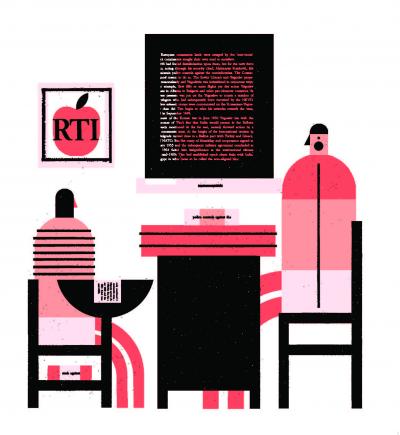Response to Intervention

All of us understand that there are things we do that maintain our health and protect us from exposure to more serious illness. Eating healthy food, exercising, watching our weight, avoiding smoking, and washing our hands are all designed to provide us with the basis of a healthier lifestyle. The more people follow these simple aspects of healthy living, the fewer colds, viruses and serious illnesses they are likely to get. Efforts to get large proportions of the public to engage in these activities are constantly found through public health announcements, commercials, advertising campaigns and reminders. Indeed, all of us are very aware of the key components that define a healthy lifestyle likely to stave off more serious medical conditions in the future.
In a similar way, what we do in the early years of formal schooling for children makes a huge difference in the academic health of a child’s development. In the earliest years of school, children must learn to read, to do math and to write. Those who struggle to master these skills in first grade, especially in reading, have a very high probability of academic struggles throughout their school years.
A widely cited study, “Learning to read and write: A longitudinal study of 54 children from first through fourth grades” by C. Juel from a 1998 Journal of Educational Psychology article, showed that children who fail to master basic reading skills at the end of first grade have an 88 percent probability of still showing struggles in fourth grade. Many other researchers over the past decade have replicated these findings.
A Landmark Shift
Given the importance of these early years in predicting future academic success or difficulty, the identification of children who are showing early signs of academic difficulty is critical.
U.S. Congress, recognizing the importance of identifying children who are potentially off course academically, approved in the re-authorization of the Individuals with Disabilities Education Act an allowance for schools to use a process for identifying students with specific learning disabilities (SLD) that examines the degree to which students respond to high-quality, research-based interventions. The provision is considered a landmark shift in the conceptualization of SLD, examining how students respond to instruction that was designed to right their learning trajectory as a way to differentiate those who with the right instruction can change their predicted path from those who need a much more intensive form of specialized instruction to sustain academic success, i.e., those in need of special education. As a result, Response to Intervention, or RTI, emerged as the way to describe this process.
The Shape of Support
RTI is a way of organizing schools to deliver instruction to students. The process is designed as a multi-tiered system of supports. In Pennsylvania, where I work, RTI was changed to Response to Instruction and Intervention, reflecting the importance of core instruction in the process.
To understand RTI, imagine a triangle, where at the base all students are provided with strong, empirically supported, standards-aligned instructional processes, typically known as core instruction or Tier 1.
Here at the triangle’s base, these processes create the foundation on which all future academic success rests. Get it right at the base, and the number of students likely to develop future difficulties in the basic skills decreases. Essentially, the base of the triangle is what we’d consider prevention.
Just like with health care, even the strongest forms of prevention don’t prevent things from going wrong. With RTI, the learning trajectory for some students is still off course, despite a strong foundation. These students need additional instructional supports that are supplemental to core instruction.
Typically called Strategic or Tier 2 support or Intensive Tier 3 support, the instructional process at these tiers adds a dimension of teaching that is designed around the identified needs of the students. To help get these students back on track, teachers provide remedial instruction in small groups over a set period of time. The idea is that these students will be given enough support to help them close the gap between themselves and their stronger-performing peers.
In order to help the students with the highest risk of future academic failure–those in Tier 3–schools need to provide them with focused instruction, very small groups, and extensive intervention. However, if students working with school personnel trained in this area still don’t respond at rates that would significantly alter their learning trajectory, they could be eligible for determination as students with SLD.
By organizing instruction around this system of tiered supports, students receive the support tailored to their personal needs, whether they’re struggling or highly proficient. As data are collected and analyzed, students can move up and down the tiers of the triangle based on their level of response to intervention. Ultimately, it corrects a student’s trajectory whenever the help is most needed.
 All Hands on Deck
All Hands on Deck
RTI works at its best when personnel from across the school, including administrators, general education teachers, special education teachers, supplemental specialists (i.e., art, music, physical education), reading and math specialists, school psychologists, guidance counselors, literacy and math coaches, collaborate to support the model. Such collaboration of instructional resources creates a school culture where all staff in the school share equal responsibility for the success and failure of all children.
While there are several keys to an RTI process working, foremost amongst them is a data-based decision-making approach to problem solving. Screening data are collected at least three times per year on all students, providing a dynamic school-wide picture of overall performance across all students. In addition, for students in Tier 2 or Tier 3, additional progress-monitoring data are collected on a frequent (at least once every two weeks) basis. The data are scrutinized to facilitate team decision-making about which students need additional support, the nature of interventions best matched to meet student needs, and which students are responding to instruction and intervention and which are not. The data decision-making process drives the entire RTI model, and all school staff are trained to effectively use the data in making decisions.
 Finding Hope in Pennsylvania
Finding Hope in Pennsylvania
In 2006, as the Director of Lehigh University’s Center for Promoting Research to Practice in the College of Education, I in collaboration with my colleague Dr. Naomi Zigmond of the University of Pittsburgh received a U.S. Department of Education Model/Demonstration grant to examine the process of progress monitoring within an RTI model. Project MP3, Monitoring Progress of Pennsylvania Pupils, was one of three projects competitively awarded around the same theme. Similar projects occurred at the University of Minnesota and the University of Oregon. Zigmond implemented the same RTI model in a high-need district in western Pennsylvania.
Lehigh’s part of MP3 worked in three schools within a large district located in central Pennsylvania that was not only receptive to the RTI process but had already been implementing a similar model at one school in the district. Working closely with the schools, MP3 facilitated all aspects of the model including providing professional development, setting up the needed data-based decision-making process, engaging all school staff in implementation, helping the schools to select and implement tiered instructional interventions, engaging parents in the process, helping to evaluate fidelity of implementation of the model, and providing the needed support to fully implement and sustain an effective RTI model in the district.
During the RTI process, teachers must develop skills in the processes of data-based decision-making. Teachers must learn that their clinical judgment about student performance, while certainly an important component of decision-making, must be supported and supplemented with empirically derived data.
My research team conducted a two year study of data-based decision-making across the MP3 project schools. We asked what percentage of time that teams of teachers made decisions were those decisions consistent with the systematic screening data. Our study showed that by the winter of each year of the project, team decision-making substantially improved and matched closely with the data at least 80 percent of the time across grades. Further analysis of those situations where teams did not agree with the screening data revealed that the teams used additional data sources beyond the screening data alone for the majority of these decisions. In essence, the analysis of data decisions showed clearly that teachers learned to use data-driven decision-making across time within the RTI model.
 An Early Indicator
An Early Indicator
The full impact of an RTI process is not immediate and comes after about 3 to 5 years. The model is intended to help the youngest students and gives them a chance to correct issues before they progress through their academic life. By looking at the screening data, you can see evidence for assessing risk, which means that over time, you could anticipate seeing increases in the percentages of students at low risk, and decreased percentages of those at high risk.
In spring 2011, we collected data from all three MP3 schools and examined the long-term outcomes. We found that, with the exception of kindergarten, there were substantial increases in students at low risk for academic failure, and decreases for at-risk students. Across grades 1 through 4, the average increase in high-risk levels was 10.5 percent and the average decrease in low-risk levels was 8.3 percent. The unusual and unexpected increase in risk level at kindergarten in spring 2011 signaled to the schools that they needed to be highly attentive and focused on the students entering first grade in fall 2011, as well as provide careful attention and instructional planning.
In general, the data are very encouraging and fully support the sustainability of the RTI model we started during the MP3 project. It’s important to note that the support offered to the district by MP3 fully ended in the spring of 2009. This means that the schools successfully maintained the model without the coaching and resources offered through the federally funded project. It’s a strong indication of the progress a school can achieve on its own while following the RTI model.
 Saving the Future
Saving the Future
I like to think that prevention is really a simple concept–pay now or pay later! We know that physical health issues, such as childhood obesity, if not addressed at young ages, leads to serious long-term health risks such as diabetes, heart disease and potentially premature death.
Academic health is no different. If young children do not learn to read, learn to do math, learn to write, the difficulties of failing those early developmental skills compounds itself into potential difficulties throughout the child’s school and into adult life. Early high school dropout, poorer outcomes for employment and difficulties in social development can often all be traced to poor academic outcomes early in a child’s school life.
RTI is designed to address this very issue – fix the problem early for students or pay for the problem long into the future.
However, RTI has, and will, continue to be only one of many efforts to reform the delivery of instruction. For example, in the current federal effort of “Race to the Top,” different approaches to school-wide reform are being implemented. Included are efforts such as “turnaround schools” that require the removal of high percentages of existing staff and administrators, or “restart schools” where schools are closed and completely restructured. These efforts, while somewhat effective, are often considered extreme, disruptive and difficult to accomplish for many typical school districts.
RTI offers an opportunity to engage in school-wide reform within the existing structure and resources available in the schools. RTI certainly requires substantial commitment of school administrators, staff and parents, and requires ongoing professional development, retraining of existing staff and a rethinking of how schools go about the routine of educating students. However, RTI is a potential mechanism for reforming schools that can work with any school staff. As we saw in the central Pennsylvania district, the process remained intact even when the federal funding disappeared.
Currently, on a national level, every state has a process in some level of implementation for bringing RTI to all school districts. My colleague, Professor Perry Zirkel, and L. B. Thomas, a school psychology graduate student, provided a catalog of state regulations and implementers of RTI, indicating that the process is widespread across the country, with a total of 12 states now requiring RTI in some form as the only mechanism for the identification of students with Specific Learning Disabilities (SLD).
Finding Promise amid Challenges
Despite the very promising early indicators of RTI’s success, substantially more research is needed to fully understand the impact of RTI on student performance. For example, the movement of RTI to the middle and high school levels has just begun. Given the very different context of middle and high school environments, simply taking the well-established elementary model and pushing the model up to the secondary level won’t work.
Pennsylvania has been a national leader in this area, spending considerable effort over the past two years developing a model specifically applicable for middle school implementation. The state has established learning sites where implementation has now completed its first year. Data are still being collected to better understand both outcomes and processes of RTI at the middle school level, and we have much to learn.
Implementation at the high school level presents even more challenges – scheduling, the content focus, the need for students to attain course credits toward graduation, and the availability of specialists for tiered instruction. Implementing and evaluating RTI at the secondary level is a clear challenge, as efforts to improve high school outcomes has occupied a major focus in the current national educational administration’s agenda.
 Research to Practice
Research to Practice
Of course one of the critical areas of RTI is the impact the process will have on identifying students with SLD. Although RTI is primarily being used across the country as a method of school-wide reform, it is also an allowable alternative process within the law for the identification of SLD. This is a substantial shift from the existing practice used over the past 30-plus years, where students were identified as having SLD based primarily on the outcomes of discrepancies between scores on tests of cognitive ability and achievement.
Despite substantial evidence that the process of determining SLD on the basis of significant differences between intelligence and achievement test scores is flawed and fraught with error, it is still highly used in the educational and psychologist communities. The degree to which decisions based on a student’s response to intervention results in “better” or more “accurate” determinations of students with SLD is still unknown. Substantially more research is needed to clearly articulate and understand the impact of the shift to an RTI process in making eligibility determinations.
Overall, RTI is showing remarkable sustainability. The process has been widely adopted across states and districts, and is quickly showing the longevity of a well-established process for school reform, but much remains to be learned. Early evidence shows it to be a remarkably successful method for delivering educational services at the elementary level. Data from our own project and from Pennsylvania’s implementation have shown RTI to have strong impact in the earliest grades, and similar findings have been reported across the country. However, the primary implementations have been in the area of literacy. Little has been established in math or writing.
We also know that the impact of RTI is more difficult to achieve in the upper elementary grades, and that implementation at middle and high schools needs to be different than elementary.
The key to the future of RTI lies in the research we do and the ability to modify our implementation on the basis of that research. Learning from doing the research, and doing the research to learn, remain the hallmarks of effectively linking research to practice.
Edward S. Shapiro is director and professor in the College of Education’s Center for Promoting Research to Practice. His research focuses on assessment and intervention for academic skills problems, outcomes of Response to Intervention models for service delivery and pediatric school psychology.